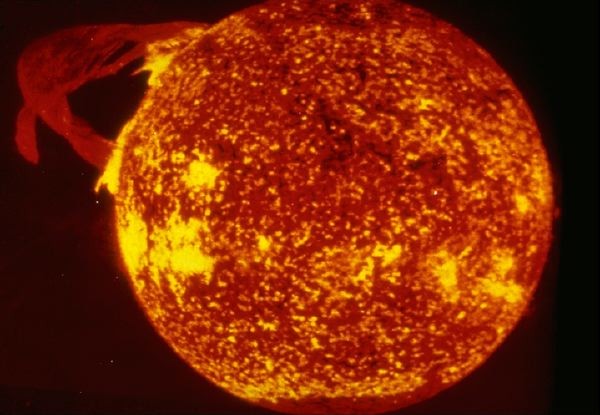Several explosions on the Sun are expected to cause a geomagnetic storm on May 10. Also known as coronal mass ejections (CMEs), these explosive outbursts comprise large clouds of solar plasma and magnetic field.
Enormous Spot Cluster
Starting this week, the Sun released five of these eruptions toward our planet, and one has already hit. Scientists predicted that the streams may not calm down until May 13.
What makes this geomagnetic storm enormous is the colossal sunspot clusters in the Sun's northern hemisphere and another in the southern hemisphere. Designated as AR3664, the sunspot is more than 124,000 miles (199,559 kilometers) across, about 16 times the diameter of Earth.
According to the National Oceanic and Atmospheric Administration (NOAA), in the worst-case scenario, the event could be similar to what happened to the 1859 Carrington event, which was placed in geomagnetic storm level 5 (G5). Still, they do not discount that we can reach a celestial event on the lower end of the same magnitude ranging from G1 to G5.
About 165 years ago, auroras reached as far as Hawaii and Central America. In our modern society, a geomagnetic storm of that magnitude can lead to widespread power outages, blackouts, and damage to infrastructure. NOAA also warned that GPS could experience the most disruptions.
It can also cause magnificent nighttime auroras, which will be visible in the US from around 11 p.m. ET until Saturday. Experts know how severe the storm will be at around 8 p.m. ET. At this point, the explosions of plasma traveling through space will be almost one million miles (1.6 million kilometers) from Earth, and NOAA plans to issue warnings immediately.
It is also predicted that three of the coronal mass ejections could combine to make a powerful 'cannibal CME.' According to Space Weather Prediction Center (SWPC) director Clinton Wallace, they anticipate that we will experience one shock after another.
On the night of May 9, NOAA issued a Severe (G4) Geomagnetic Storm Watch, and it was noted that a large sunspot cluster had created different moderate to strong solar flares since May 8. Currently, the agency is preparing for the coronal mass ejections to reach NASA's Advanced Composition Explorer (ACE), which was built to study spaceborne energetic particles.
READ ALSO: Analysis of the 1872 Solar Storm Reveals Its Modern Implications for Technology Vulnerabilities
What are Solar Storms?
The surface of the Sun continuously erupts and hurls particles into space. However, they rarely reach us since the Sun is 93 million miles (150 million kilometers) away from the Earth. When energy and particles from the Sun interrupt our magnetosphere temporarily, they can create a geomagnetic storm.
Geomagnetic storms happen when high-energy particles from solar flares emitted by the Sun reach our planet. When the Sun releases a solar flare, it creates an electromagnetic pulse (EMP) that resembles that of a nuclear bomb, which can disable all electronic equipment, like satellites.
Some solar particles reach the Earth's magnetic field lines into the upper atmosphere, activate oxygen and nitrogen molecules, and beam photons of light in various colors.
RELATED ARTICLE: Solar Storms: Radio Blackouts Felt Over Pacific Ocean; Another Geomagnetic Storm May Hit Earth
Check out more news and information on Solar Storm in Science Times.












![Martian Meteorites Collected on Earth After a Space Rock Smashed Mars 11 Million Years Ago [Study]](https://1721181113.rsc.cdn77.org/data/thumbs/full/54041/258/146/50/40/martian-meteorites-collected-on-earth-after-a-space-rock-smashed-mars-11-million-years-ago-study.jpeg)


